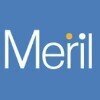Medical Writer
30+ Medical Writer Interview Questions and Answers

Asked in Docplexus Online Services

Q. How many phases are there in a clinical trial, and can you briefly explain each phase?
There are 4 phases in clinical trials: Phase 1, 2, 3, and 4.
Phase 1: Small group of healthy volunteers, assess safety and dosage
Phase 2: Larger group of patients, assess effectiveness and side effects
Phase 3: Even larger group, compare to existing treatments, monitor side effects
Phase 4: Post-marketing surveillance, monitor long-term effects and safety

Asked in Cliantha Research

Q. What is medical writing? What is clinical trials? Phases of clinical trials?
Medical writing involves creating content for healthcare professionals and patients. Clinical trials are research studies to test new treatments.
Medical writing involves creating documents like regulatory submissions, clinical study reports, and patient education materials.
Clinical trials are research studies that test the safety and effectiveness of new treatments or interventions.
Phases of clinical trials include Phase 1 (safety and dosage), Phase 2 (efficacy and side effec...read more
Medical Writer Interview Questions and Answers for Freshers
Asked in Medwiz Healthcare Communications

Q. What are the concepts of referencing and citations?
Referencing and citations are essential concepts in academic writing to acknowledge sources of information.
Referencing involves providing detailed information about the sources used in the document.
Citations are brief mentions of the source within the text, usually in parentheses.
Different citation styles like APA, MLA, and Chicago have specific formats for referencing.
Failure to properly reference and cite sources can lead to plagiarism.
Examples: (Smith, 2019) or (World Heal...read more
Asked in Imedic Heathcare

Q. What do you mean by randomization in clinical trials?
Randomisation in clinical trials ensures unbiased allocation of participants to treatment groups, enhancing validity of results.
Randomisation minimizes selection bias by randomly assigning participants to treatment or control groups.
It enhances the comparability of groups, ensuring that differences in outcomes are due to the intervention, not pre-existing differences.
For example, in a drug trial, participants might be randomly assigned to receive either the drug or a placebo....read more

Asked in Sanofi

Q. What types of documents do you have experience managing?
I have experience managing a variety of documents including clinical trial protocols, regulatory submissions, medical manuscripts, and patient education materials.
Clinical trial protocols
Regulatory submissions
Medical manuscripts
Patient education materials
Asked in Imedic Heathcare

Q. What do you know about medical societies?
Medical societies are organizations that promote medical knowledge, research, and professional development among healthcare professionals.
Medical societies often provide continuing education opportunities for healthcare professionals.
They publish journals and research findings to disseminate new medical knowledge, e.g., American Medical Association (AMA).
Many societies advocate for public health policies and represent their members' interests to policymakers.
They organize con...read more
Medical Writer Jobs




Asked in Accutest Research Laboratories

Q. Why do you want to be a medical writer?
I aspire to be a medical writer to combine my passion for science with effective communication, impacting healthcare positively.
I have a strong background in life sciences, which equips me to understand complex medical concepts.
I enjoy translating intricate medical information into clear, accessible language for diverse audiences.
My experience in research has honed my skills in data analysis and critical thinking, essential for accurate medical writing.
I am passionate about c...read more

Asked in Springer Nature in India

Q. phases of clinical trial, drug development
Phases of clinical trial and drug development
Preclinical research: Testing on animals and in vitro to assess safety and efficacy
Phase 1: Small-scale study on healthy volunteers to determine safety and dosage
Phase 2: Larger study on patients to evaluate effectiveness and side effects
Phase 3: Extensive study on a larger patient population to confirm efficacy and monitor adverse reactions
Phase 4: Post-marketing surveillance to monitor long-term effects and optimize use
Drug devel...read more
Share interview questions and help millions of jobseekers 🌟

Asked in VyasLife

Q. What is the difference between regulatory and non-regulatory writing?
Regulatory writing involves compliance-focused documents, while nonregulatory writing encompasses broader communication in healthcare.
Regulatory writing includes documents like Clinical Study Protocols and Investigator's Brochures.
Nonregulatory writing covers materials such as marketing brochures and educational content.
Regulatory documents must adhere to strict guidelines set by agencies like the FDA.
Nonregulatory writing allows for more creative freedom and can target vario...read more
Asked in Imedic Heathcare

Q. What are placebo-controlled randomized trials?
Placebo randomised trials assess the efficacy of a treatment by comparing it to a placebo in a controlled environment.
Participants are randomly assigned to either the treatment group or the placebo group.
The placebo group receives a non-active treatment, which helps to isolate the effect of the actual treatment.
These trials help to eliminate bias and ensure that results are due to the treatment itself.
An example is a trial for a new antidepressant where one group receives the...read more

Asked in BioMed Informatics

Q. Regulatory bodies and its function's?
Regulatory bodies are organizations that oversee and regulate various industries to ensure safety and compliance.
Regulatory bodies set standards and guidelines for industries to follow
They monitor and enforce compliance with these standards
Examples include the FDA for pharmaceuticals and medical devices, EPA for environmental regulations, and FAA for aviation safety
Regulatory bodies also conduct inspections and investigations to ensure compliance
They may also have the power t...read more

Asked in LTIMindtree

Q. How do you handle pressure?
I handle pressure by prioritizing tasks, staying organized, taking breaks, and seeking support when needed.
Prioritize tasks based on deadlines and importance
Stay organized with to-do lists and calendars
Take breaks to recharge and prevent burnout
Seek support from colleagues or supervisors when feeling overwhelmed

Asked in GlaxoSmithKline Pharmaceuticals

Q. PLS regulations and definitions
PLS regulations and definitions refer to the regulations and definitions set by the Prescription Labelling Standard.
PLS regulations are guidelines set by regulatory bodies to ensure accurate and clear prescription labeling.
PLS definitions include specific terms and instructions related to prescription labeling.
Examples of PLS regulations include requirements for font size, drug name placement, and patient instructions.
Examples of PLS definitions include terms like 'dispense a...read more
Asked in Imedic Heathcare

Q. What is meta-analysis?
Meta-analysis is a statistical technique that combines results from multiple studies to derive a comprehensive conclusion.
Integrates findings from various studies to improve statistical power.
Helps identify trends and patterns that may not be evident in individual studies.
Example: Combining data from several clinical trials on a new drug's efficacy.
Can address inconsistencies in study results by providing a more robust analysis.
Often used in systematic reviews to summarize ev...read more
Asked in InScience Healthcare Consulting

Q. How do you conduct a literature search?
A literature search involves systematically finding and reviewing published research to gather relevant information on a topic.
Define Your Research Question: Clearly outline what you are looking for, e.g., 'What are the effects of drug X on condition Y?'
Choose Appropriate Databases: Use databases like PubMed, Scopus, or Google Scholar to find peer-reviewed articles and studies.
Use Keywords and Boolean Operators: Combine keywords with operators like AND, OR, NOT to refine your...read more

Asked in Synapse Labs

Q. Tell me about your experience with USFDA submissions.
USFDA submission involves preparing and submitting documentation to the US Food and Drug Administration for approval of a new drug or medical device.
Prepare comprehensive documentation including clinical trial data, safety information, and manufacturing processes
Ensure all information meets USFDA regulations and guidelines
Submit the application through the Electronic Submissions Gateway (ESG) or other designated channels
Respond to any queries or requests for additional inform...read more

Asked in Wipro

Q. What are your expectations?
I expect to contribute my medical knowledge and writing skills to create accurate and informative content.
Expectation to utilize medical expertise in writing medical content
Desire to produce accurate and informative content for various audiences
Hope to collaborate with healthcare professionals to ensure content is up-to-date and relevant
Asked in Allstate Insurance Company

Q. What was your last CTC?
My last CTC was competitive, reflecting my experience and skills in medical writing, totaling INR 12 lakhs per annum.
CTC stands for Cost to Company, which includes all benefits and allowances.
My last CTC was INR 12 lakhs per annum, which included base salary, bonuses, and health benefits.
I negotiated my CTC based on my previous experience in clinical research and writing.
In my last role, I contributed to several successful publications, which added value to my profile.

Asked in Havas Media

Q. What is the AMA referencing definition and structure?
AMA referencing is a citation style used in medical and scientific writing to ensure proper attribution of sources.
AMA stands for American Medical Association, which provides guidelines for citing sources in medical literature.
References are numbered in the order they appear in the text, using superscript numbers.
Each reference includes specific details: author(s), title, journal name, year, volume, and page numbers.
Example: Smith J, Doe A. The impact of diet on health. J Nut...read more
Asked in DMB Restaurant

Q. Describe a difficult situation you have faced.
Difficult situations can arise in various forms and can be challenging to handle.
Difficult situations can be related to work, personal life, or health.
They can involve conflicts with colleagues, family members, or healthcare providers.
Handling difficult situations requires effective communication, problem-solving skills, and emotional intelligence.
Examples include dealing with a difficult patient, managing a team conflict, or coping with a personal loss.
It is important to rem...read more

Asked in Springer Nature in India

Q. What is microdosing?
Microdosing is the practice of taking very small doses of a substance, typically a psychedelic drug, to achieve subtle effects.
Microdosing involves taking a fraction of a normal dose of a substance.
It is commonly associated with psychedelic drugs like LSD or psilocybin mushrooms.
The purpose of microdosing is to experience subtle effects without the full psychedelic experience.
Microdosing is believed to enhance creativity, focus, and mood, while minimizing potential side effec...read more
Asked in VyasLife

Q. What is clinical?
Clinical refers to the practical application of medical knowledge in patient care and research.
Clinical trials test new treatments on patients to assess their effectiveness, e.g., testing a new cancer drug.
Clinical guidelines provide evidence-based recommendations for healthcare professionals, e.g., diabetes management protocols.
Clinical research involves studying diseases and treatments in real-world settings, e.g., observational studies on heart disease.

Asked in Sekhmet Technologies

Q. Guidelines in medical writing
Guidelines in medical writing help ensure accuracy, clarity, and adherence to ethical standards.
Follow specific journal guidelines for formatting and submission
Use clear and concise language to convey complex medical information
Cite sources accurately and avoid plagiarism
Adhere to ethical standards, including patient confidentiality and data integrity
Consider the target audience when writing, such as healthcare professionals or patients

Asked in Sekhmet Technologies

Q. Manuscript writing process
The manuscript writing process involves planning, drafting, revising, and editing to create a polished final product.
Start by outlining the key points and structure of the manuscript.
Draft the content, ensuring it is clear, concise, and follows the required format.
Revise the manuscript for accuracy, coherence, and flow.
Edit for grammar, spelling, and formatting errors before finalizing.
Collaborate with co-authors and incorporate feedback for improvements.

Asked in Sekhmet Technologies

Q. Various referencing tools
Various referencing tools help medical writers cite sources accurately.
Popular referencing tools include APA, MLA, and Chicago style.
Each tool has specific guidelines for citing sources such as books, journals, and websites.
Medical writers must be familiar with these tools to ensure proper citation of sources in their work.

Asked in HCLTech

Q. What are some good practices for writing?
Effective work practices enhance productivity, ensure accuracy, and foster collaboration in medical writing.
Maintain clear communication with team members to avoid misunderstandings.
Use templates for consistency in formatting and style, such as standardizing headings and references.
Implement a thorough review process, including peer reviews and proofreading to catch errors.
Stay updated with regulatory guidelines and industry standards to ensure compliance.
Organize research ma...read more
Asked in VyasLife

Q. Why are you interested in medical writing?
Medical writing combines my passion for science and communication to improve healthcare through clear, accurate documentation.
Passion for science: I have always been fascinated by medical research and advancements.
Communication skills: I enjoy translating complex medical information into understandable content for various audiences.
Impact on healthcare: My work can contribute to better patient outcomes by ensuring accurate information is available.
Diverse opportunities: Medic...read more

Asked in DDReg Pharma

Q. guideline pertaining to mw
Guidelines for medical writers are essential for ensuring accuracy and compliance in medical writing.
Guidelines provide standards for formatting, referencing, and writing style in medical documents.
Examples include AMA Manual of Style, ICH guidelines, and journal-specific author instructions.
Adherence to guidelines is crucial for maintaining credibility and avoiding plagiarism in medical writing.

Asked in Sekhmet Technologies

Q. What are the steps involved in a literature search?
The step of conducting a literature search involves identifying research questions, selecting databases, using search terms, screening results, and synthesizing information.
Identify research questions to guide the search
Select appropriate databases to search for relevant literature
Use specific search terms and Boolean operators to refine the search
Screen search results based on relevance and inclusion criteria
Synthesize information from selected studies to draw conclusions

Asked in Torry Harris Integration Solutions

Q. Tool of referencing
The tool of referencing in medical writing is crucial for citing sources accurately.
Use a consistent referencing style such as APA, MLA, or AMA.
Include in-text citations for direct quotes or paraphrased information.
Create a reference list at the end of the document with full details of each source.
Ensure all references are accurate and up-to-date to maintain credibility.
Examples: (Smith, 2019) or (Johnson et al., 2020)
Interview Questions of Similar Designations
Interview Experiences of Popular Companies







Reviews
Interviews
Salaries
Users

















